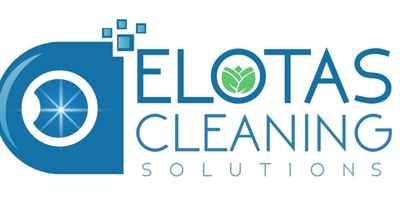Particle contamination in a cleanroom environment is an important consideration for many industries. Adhering to the recommended particle levels outlined by ISO 14644-1 can help promote safe and efficient operations within sterile spaces. This article will explore what these standards are, how they were developed, and why following them is so important.
The International Standards Organization (ISO) has published various documents that describe international best practices for maintaining proper environmental control within aseptic spaces. Central among these recommendations are those found in ISO 14644-1: Cleanrooms And Associated Controlled Environments – Part 1: Classification Of Air Cleanliness By Particles Sizes. This document provides specifications on allowable numbers of airborne particles per cubic meter of air at specified particle sizes.
The importance of adhering to the guidelines set forth in ISO 14644-1 cannot be overstated; this standard helps ensure safety and product quality as well as providing assurance to businesses that their processes meet industry requirements. In order to better understand the implications of this document and its application, it is necessary to further examine the details behind its development and implementation.
Table of Contents
Definition Of Iso 14644-1
ISO 14644-1 is an international standard developed by the International Organization for Standardization (ISO) that specifies requirements and guidelines for cleanroom classification. It defines minimum airborne particulate cleanliness levels, environmental monitoring procedures, test methods and operational practices in order to maintain a high level of air cleanliness. The purpose of this standard is to ensure efficient control over contamination through stringent quality assurance measures.
The ISO 14644-1 document breaks down particle size into six classes based on their diameter – 0.1 microns or larger; 0.2 microns or larger; 0.3 microns or larger; 0.5 microns or larger; 1 micron or larger; and 5 microns or larger. These sizes are then further divided into nine particles classifications depending on the purity needs within a specific environment, with Class 1 being the most stringent and Class 9 being the least restrictive in terms of acceptable particle concentration levels. As such, it provides guidance on how to set up different types of controlled environments according to their required degree of cleanliness. With these definitions established, we can now move onto discussing the recommended particle levels in detail as outlined by ISO 14644-1.
Cleanroom Classification Requirements
The International Standardization Organization’s (ISO) 14644-1 provides a standardized approach to defining the levels of cleanliness for classifying cleanrooms. It defines nine classes, from M1 to ISO 8, and assigns particle counts per cubic meter for each particular class. The requirements vary depending on the application and specific product needs. For example, Class 1 is typically used in applications involving semiconductor wafers or hard disk drives where particles greater than 0.1 μm are not allowed.
Classes 5 to 8 are more commonly found in general manufacturing areas such as pharmaceuticals or medical device production. These classes require fewer particles at lower sizes; however, they also allow higher concentrations of larger particles that may be harder to remove with air filters alone. In this case, additional cleaning measures might need to be taken to meet the desired level of cleanliness.

Airborne Particle Counts
Airborne particle counts are key to ensuring the quality of a cleanroom environment and should be monitored regularly. The recommended levels for each class of cleanroom are stated in ISO 14644-1, which sets forth standards for air purity within cleanrooms.
The following criteria outlines the expectations for airborne particles:
- Particles larger than 0.5μm must not exceed 3500 per m3.
- Particles between 0.2μm and 0.5 μm must not exceed 2920 per m3.
- Particles smaller than 0.2μm must not exceed 490 per m3 at rest or 870 during operation.
- Non-viable particles above 5μm size must not exceed 10% of all particles present.
- All other non-viable particles from 5 – 25μm size must not exceed 3%.
It is important to remember that these recommendations can vary depending on the application and it is best to consult an experienced professional if more specific guidance is needed about any particular situation related to cleanroom classification requirements and airborne particle count levels. Moreover, useful information on monitoring & testing methods can help ensure that the highest level of air purity is maintained in a given area throughout its life cycle.
Monitoring & Testing Methods
ISO 14644-1 is an international standard that outlines the requirements for particle cleanliness levels in enclosed spaces. Monitoring and testing methods are necessary to ensure that these standards are being met.
Particle monitoring must involve sampling at least once a month, with more frequent sampling required when changes occur or if there have been recent problems with contamination. Sampling should be done from locations representative of each area of use within the facility as specified by ISO 14644-1. It is important to note that viable microorganisms cannot be detected by physical particle counting alone, so other tests may need to be used depending on the application.
The sample results should then be compared against accepted limits for the given space classified according to ISO 14644-1. If any samples exceed this limit, further investigation into corrective actions should begin immediately. By diligent monitoring and testing of particles using approved techniques, it can be determined whether particle levels meet acceptable criteria or not. This helps create a safe environment where quality products can be manufactured without risk of microbial contamination.
Corrective Actions For Non-Compliance
Non-compliance with the particle level requirements of ISO 14644-1 can cause serious consequences for a facility and its products. Therefore, it is essential to take corrective actions when non-compliance occurs in order to ensure that operations remain compliant. The first step in taking corrective action is identifying the source of contamination and eliminating or reducing it as much as possible. This could involve making changes to equipment, personnel practices, air filtration systems, or other sources. Additionally, any contaminated materials must be removed from the workspace and properly disposed of according to applicable regulations.
It is also important to review all processes within the facility to determine what additional measures can be taken in order to maintain compliance with the recommended particle levels set out in ISO 14644-1. For example, training employees on proper cleaning and maintenance procedures; conducting regular audits; implementing an environmental monitoring program; and increasing ventilation may help reduce airborne contaminants. By consistently monitoring and testing their environment, facilities can quickly identify and address issues before they become too serious.

Frequently Asked Questions
What Is The Difference Between Iso 14644-1 And Other Cleanroom Standards?
ISO 14644-1 is an international standard for the design, installation, and operation of cleanrooms. It provides guidance on air quality classification and particle concentration limits to achieve specific levels of contamination control. This standard has become increasingly important in sectors such as manufacturing, pharmaceuticals, medical device production, biotechnology research and development, aerospace, semiconductor fabrication, and automotive engineering. When compared with other cleanroom standards such as US Federal Standard 209E or Japan JIS B9920-3:2004; ISO 14644-1 distinguishes itself through its focus on factors such as room construction materials and methods of testing to ensure acceptable environmental conditions are met.
The most basic requirement set forth by this standard requires that a cleanroom must have a specified number of particles per cubic meter at rest (measured by size) that do not exceed the limit established for the corresponding class of air cleanliness. The main parameters used to measure these concentrations are total number concentration (NC), between 0.1μm and 5μm; nonvolatile residue (NVR); solid surface activity (SSA); airborne molecular contamination (AMC). To ensure conformity with the requirements outlined by this document it is recommended that:
- Cleanrooms should be tested regularly to verify compliance with the relevant ISO classes;
- Appropriate pressure differentials should be maintained between adjoining rooms;
- Monitoring systems should be implemented throughout all areas within the facility;
- Personnel entering a cleanroom should adhere to strict gowning procedures prescribed by company policy or regulation.
Designers, operators, auditors and inspectors working in settings where ISO 14644-1 applies need to understand how their activities affect air quality inside a controlled environment so they can meet required specifications while keeping safety risks associated with poor air quality under control.
Are There Any Health Risks Associated With Particle Levels Higher Than What Is Recommended In Iso 14644-1?
The question of whether there are any health risks associated with particle levels higher than those recommended in the International Standard ISO 14644-1 (ISO 14644-1) deserves consideration. This standard, which sets out cleanroom standards for airborne particles, establishes a ‘Classification of Air Cleanliness’ that specifies maximum concentrations for different sizes and types of particulates. These limits could be exceeded due to an increase in activity or contamination within the space, resulting in increased risk of exposure from air-borne particles and contaminants.
In such cases, it is essential to understand the potential implications on human health – both short term and long term – from being exposed to a concentration of pollutants above those specified by ISO 14644-1. While immediate effects may include allergic reactions or respiratory irritation, more serious issues can arise over time including lung damage caused by inhaling toxins present in the air and even cancer if certain carcinogens are present. Furthermore, research has also shown that prolonged exposure to high particle concentrations can lead to reduced productivity as well as difficulty concentrating due to fatigue and other symptoms related to poor indoor air quality. Therefore, when considering particle levels beyond what is recommended by ISO 14644-1, it is important to carefully assess the possible consequences before proceeding further.
How Often Should Monitoring And Testing Be Conducted To Ensure Compliance?
Monitoring and testing for compliance with the particle levels recommended by ISO 14644-1 should be conducted regularly to ensure a safe environment. The frequency of monitoring and testing will depend on several factors, such as:
- the type of particles being monitored or tested;
- the level of cleanliness required in an area;
- how long it has been since a previous test was conducted;
- any changes that have occurred in the environment during that time; and
- whether there is reason to believe contamination could have occurred.
In order to determine the most appropriate frequency for regular monitoring and testing, industry experts recommend conducting risk assessments using standards such as those outlined in ISO 14644-1. These guidelines can help identify areas where more frequent tests may need to be performed, allowing businesses to develop effective protocols for maintaining acceptable levels of air quality. Additionally, establishing an audit trail through documentation can provide evidence that proper procedures are being followed. By taking these steps, organizations can proactively manage their environments and ensure compliance with applicable regulations.

What Type Of Corrective Actions Should Be Taken If The Particle Levels Are Not Compliant?
When particle levels are not compliant with ISO 14644-1 requirements, appropriate corrective actions should be taken. Understanding what type of action needs to be taken is important in order to ensure that cleaning processes remain effective and efficient.
Corrective actions can vary depending on the situation but may include a range of activities such as conducting additional monitoring or testing; adjusting existing processes; replacing process equipment; or changing personnel practices or procedures. It is essential that any corrective action taken addresses both the cause of non-compliance and its effects. This will help reduce production errors and costs associated with them while also helping to maintain compliance with industry standards. Additionally, it is important to review all corrective measures regularly to ensure they are still providing desired results and continue to meet regulatory standards.
Ultimately, taking prompt corrective action when particle levels are not compliant helps organizations maintain their quality control system effectively and efficiently so they can produce safe products for consumers. Furthermore, these steps protect companies from potential liabilities resulting from non-compliant product releases. Therefore, having an understanding of the various types of corrective actions available when dealing with non-compliance issues is necessary for successful implementation of quality management systems.
How Can I Ensure That The Particle Levels In My Cleanroom Meet The Requirements Of Iso 14644-1?
Ensuring that the particle levels in a cleanroom meet the requirements of ISO 14644-1 is critical for maintaining product safety and quality. To ensure compliance with these standards, it is important to understand the correct methods of monitoring and measuring particles as well as any corrective actions that may be necessary if particle levels are not compliant.
The first step to ensuring that particle levels meet the requirements of ISO 14644-1 is having an effective system in place for regular monitoring and measuring of air particulate concentrations. This should include both active and passive sampling techniques, so that all potential sources of airborne contamination can be identified and evaluated. Additionally, frequent testing against established baseline values helps to identify any deviations from normal operating conditions which could indicate a need for corrective action.
When evaluating test results, it is important to have a clear procedure for determining whether or not corrective measures are needed. Depending on the severity of noncompliance issues, this could involve anything from simply adjusting ventilation systems or cleaning procedures, to more drastic changes such as replacing filters or installing additional control equipment. In addition, preventive maintenance activities should be implemented regularly in order to minimize future risks of contamination. By taking proactive steps such as performing routine inspections and utilizing predictive analytics, operators will be able to quickly diagnose problems before they become major issues.

Conclusion
The International Organization for Standardization (ISO) 14644-1 is a comprehensive cleanroom standard that provides guidance on acceptable particle concentrations in order to prevent the contamination of sensitive products. It mandates testing and monitoring protocols to ensure continued compliance, as well as corrective actions when necessary. Additionally, ISO 14644-1 outlines potential health risks associated with elevated particle levels. Compliance with this standard is essential for any facility manufacturing high value or life saving products.
To ensure optimal performance and product safety, regular monitoring and testing of air quality should be conducted according to the schedule outlined by ISO 14644-1 standards. Corrective action should also be taken promptly if particle levels are found to exceed the recommended limits. Facility managers must take into account all applicable regulations and strive to maintain the highest possible level of cleanliness in their facilities at all times.
By adhering strictly to the requirements of ISO 14644-1, manufacturers can benefit from improved process control while ensuring product integrity and regulatory compliance. Regular evaluation of airborne particles in accordance with these standards helps create a safe working environment where personnel are protected from potentially hazardous exposure, providing peace of mind for both employees and customers alike.

